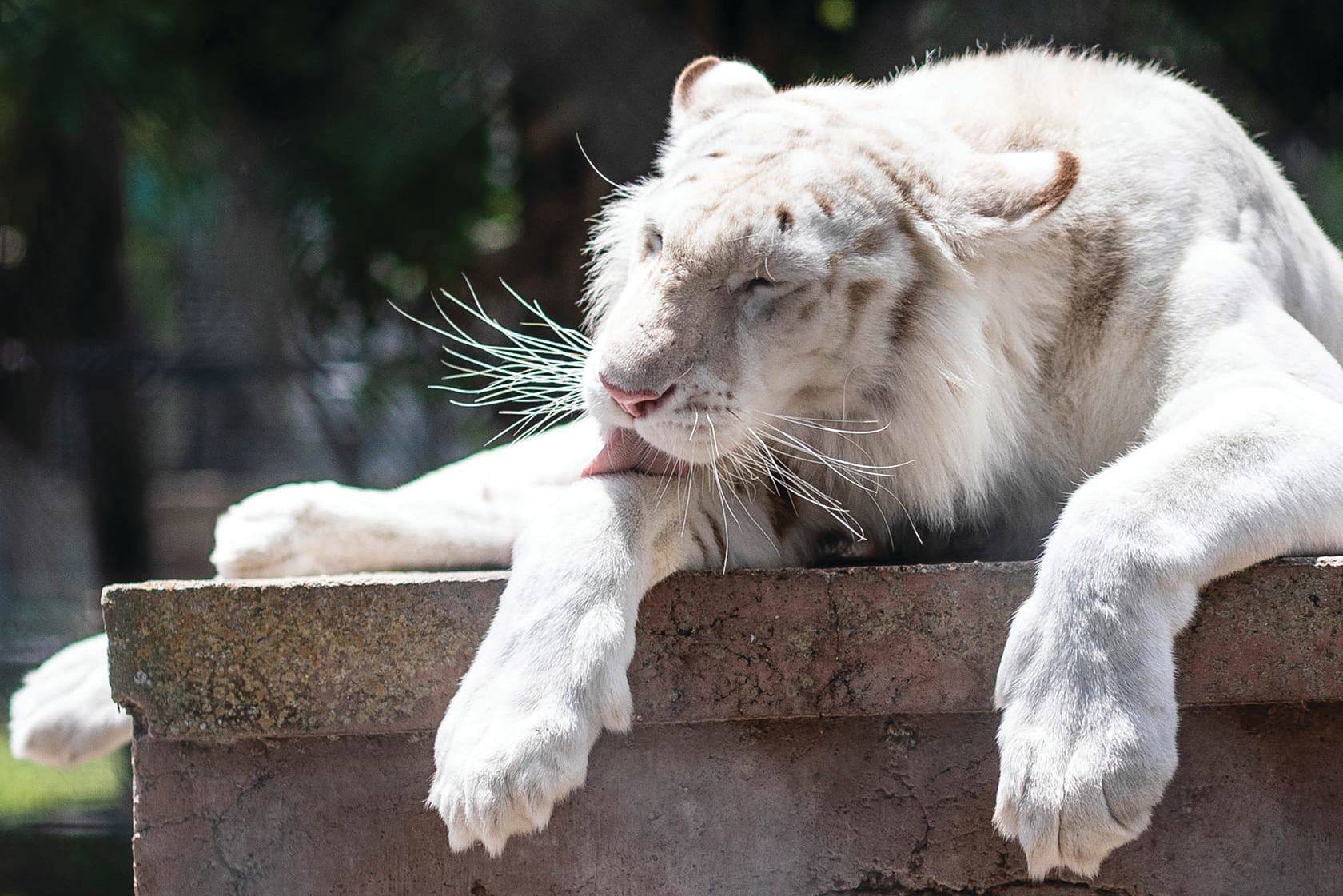
Southwest Florida Is Home to a Surprising Array of Exotic Animals
Far from the African savanna and the rainforests of South America, exotic animals stalk our land. Majestic elephants, graceful big cats, agile lemurs… all can be found within a short drive of downtown Sarasota at a variety of nonprofit sanctuaries and other conservation facilities. Eager to meet your exotic neighbors? Get ready for a walk on the wild side.
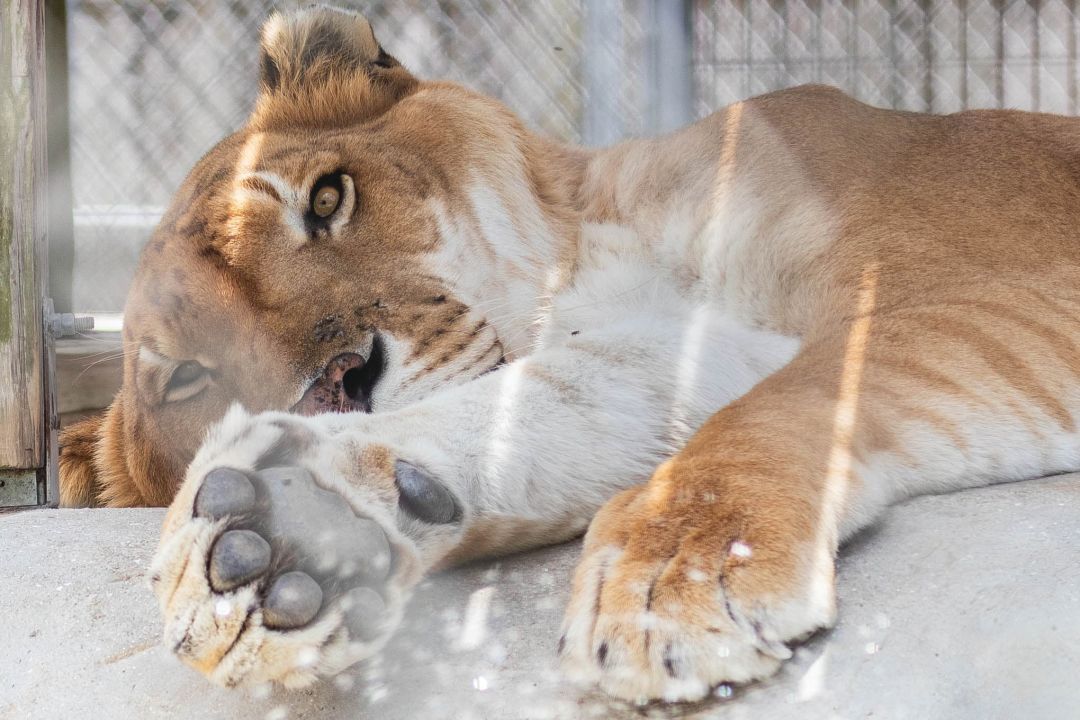
Image: Hannah Phillips
Big Cat Habitat
Ligers and tigons are real—and they are impressive. Ligers are the product of a female tiger and a male lion, while tigons are the inverse, but they both have paws the size of your head and massive shoulder blades jutting up through thick muscle. You can see them both just 2 miles from Fruitville Library at Sarasota’s Big Cat Habitat.
More than 20 big cats—and 350 creatures in all—call the property home. The roster includes a panther, tigers, lions, Bengal cats, an African caracal, a serval, a clouded leopard, jaguars and a Florida panther. Ranging in size from roughly 30 pounds (the serval) to 1,000 (the liger), all make for an arresting sight.
“We want to bring the emotion to visitors and raise awareness through that,” says Clayton Rosaire, the son of the nonprofit’s founder, Kay Rosaire. “Seeing people interact and fall in love with the animals might make a difference.”
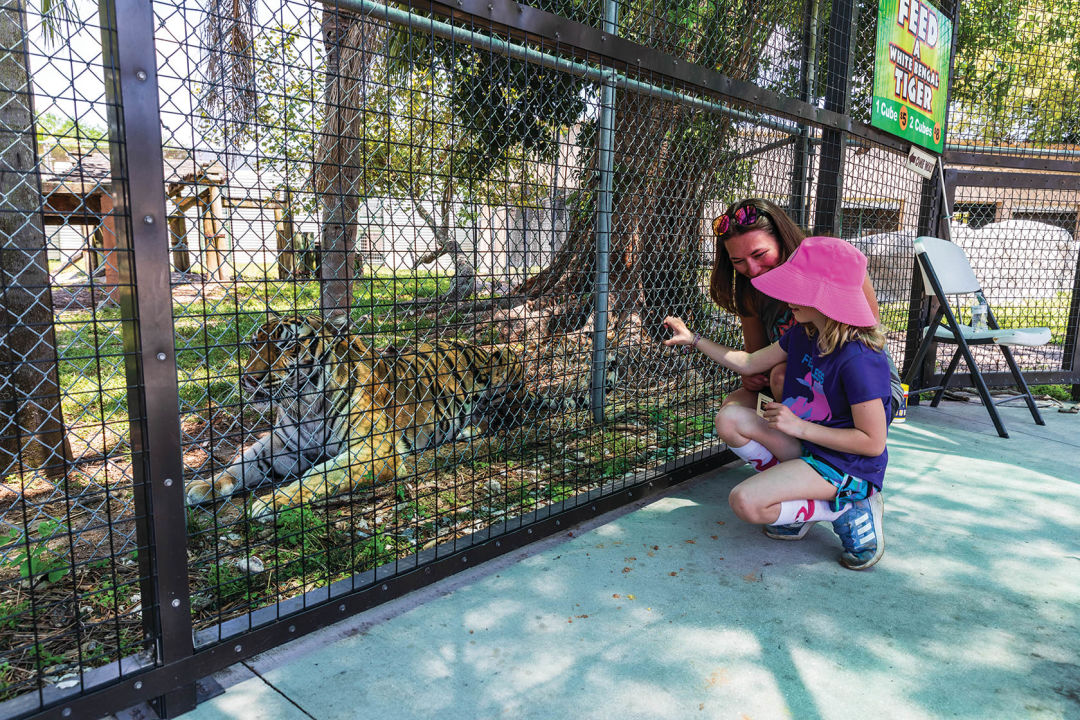
Image: Hannah Phillips
When Rosaire began performing with lions and tigers at 17, he was the youngest big cat “teacher”—not “trainer,” he emphasizes—in the world. Now 44, he’s taken over operations as the ninth generation in a family that traces its circus and performance roots back to court jesters in England. The family moved to the U.S. after his grandfather, Derrick Rosaire Sr., performed on The Ed Sullivan Show in 1960 with his act “Rosaire and Tony the Wonder Horse.”
Today, visitors to Big Cat can practice yoga among the animals or experience feeding a bear or tiger. There are also ring-tailed and ruffed lemurs, foxes, spider and capuchin monkeys, a wolf, a sloth, exotic birds and goats.
Raised among exotic animals, Rosaire is at ease among jungle royalty. “I live a wild life,” he says. “The animals are what I love. They’re my family.” Rosaire has the scars to prove it. “When an accident happens, it’s the human’s fault and you have to learn from it,” he says. “The easiest way to deal with it is using treats.” Favorites include boneless pork tenderloin or venison.
Each animal has a personality. A capuchin monkey named Ruby enjoys throwing fruit at women because they react with a louder screech, Rosaire says. He adds that women also might want to skip the perfume before coming to the facility. “A lion would take the scent as a challenge and might pee on them to mark them for ownership,” Rosaire says. The animal’s spray can reach 12 to 16 feet.
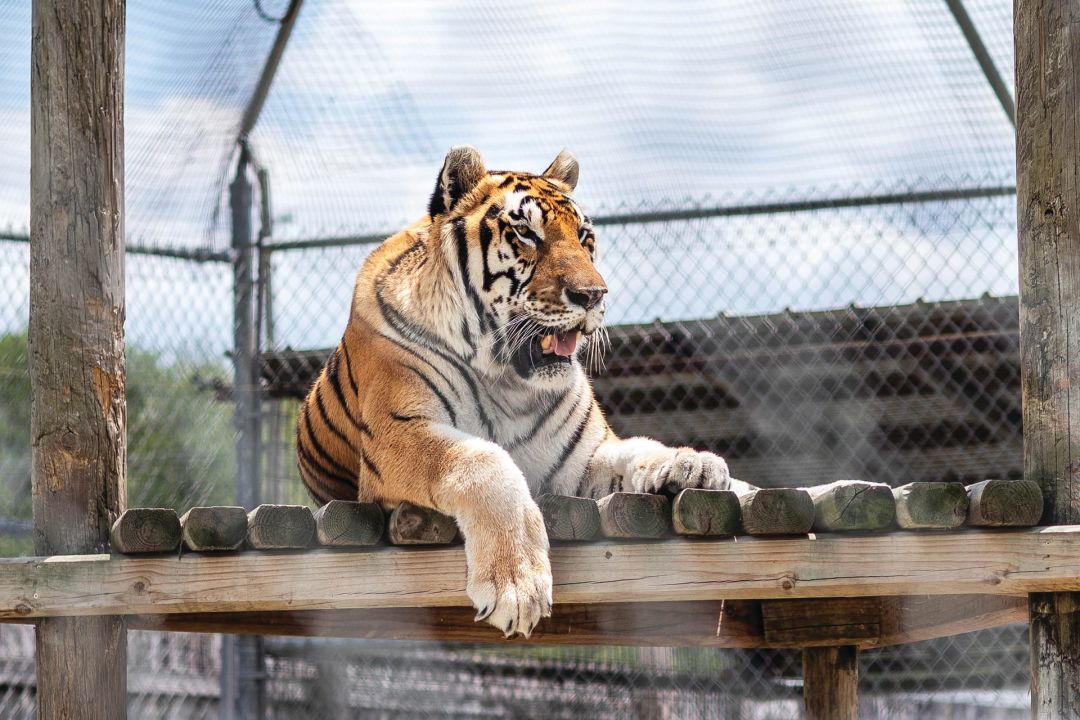
Image: Hannah Phillips
The cats come from various backgrounds, including private owners who learned owning a tiger was a better idea in theory than in practice. Others come from smaller zoos that have closed, leaving the animals with nowhere to go.
With conservation on the agenda, Rosaire aims to participate in a breeding program called the Species Survival Plan that focuses on ensuring the survival of endangered or threatened species by breeding them in captivity. Red ruffed lemurs are critically endangered and “two were born on site, which is exciting,” Rosaire says. In the meantime, raising awareness among a future generation of animal lovers is key. “If one kid leaves and wants to become a park ranger or a vet, then we’ve done something to help the animal world,” he says.
Big Cat Habitat is located at 7101 Palmer Blvd., Sarasota, and is open to the public noon-4 p.m. Wednesday-Sunday. For more information, call (941) 371-6377 or visit bigcathabitat.org.

Image: Hannah Phillips
Myakka Elephant Ranch
Alligators and flamingos might top lists of common Florida wildlife, but an unlikely pair of retirees have joined their ranks. Asian elephants Carol and Patty live in southeastern Manatee County, in Myakka City, on 30 acres—one of the largest elephant habitats in North America.
Open to the public since 2019, i supports conservation by creating up-close experiences with Carol and Patty, who each weigh roughly 7,500 pounds. Regular baths help keep the animals cool and hydrated in the Florida sun, and the two pachyderms also have an 80,000-gallon watering hole, mudding areas, sand domes and shady escapes beneath trees.
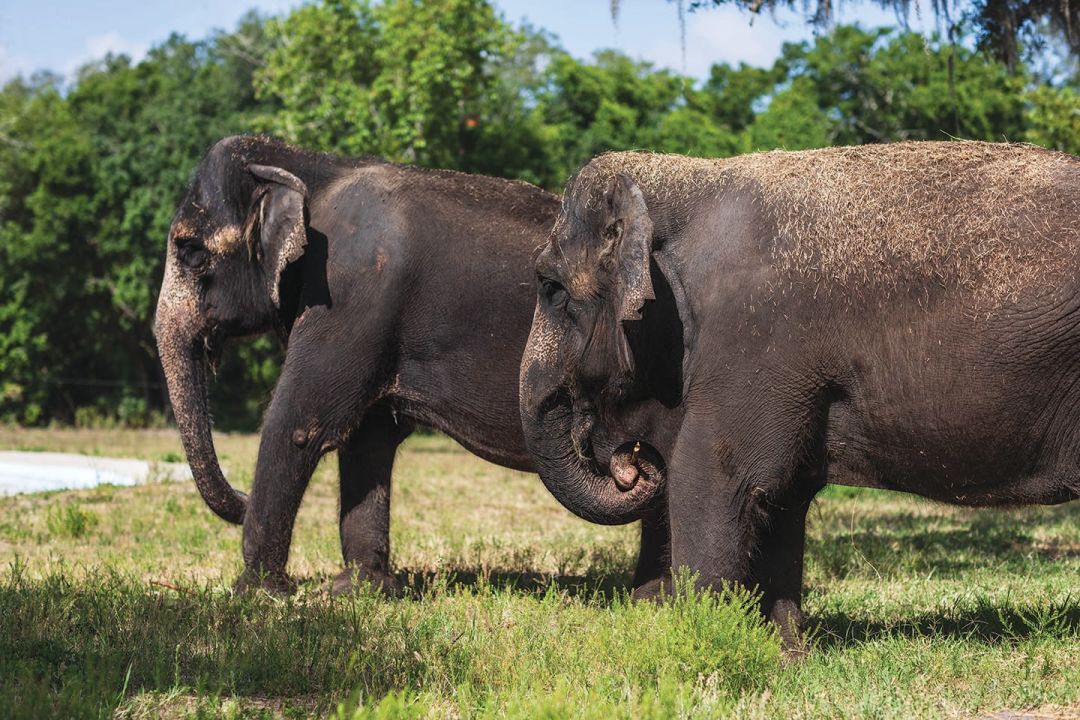
Image: Hannah Phillips
Carol and Patty are both now 50 years old. As babies, they lived a distinctly unnatural show-biz life on the road with the Ringling Bros. and Barnum & Bailey circus. The elephants were brought to the U.S. from Thailand as infants in exchange for just $20. In addition to performing in the circus, they were featured in the 1980 comedy Smokey and the Bandit II, served as props for Indian weddings and entertained at the Swap Shop flea market in Fort Lauderdale as part of a seasonal circus for 16 years.
Their only obligation nowadays is to show up for ranch visitors who have booked reservations to meet them. Ranch founder Lou Barreda sets a schedule for the animals around feedings, their two-hour bathing ritual, stall maintenance and cleaning. In the morning, visitors arrive for an educational encounter with the elephants, and then the animals stay outdoors from around 12:30 p.m. to 6. Favorite destinations include a 3-acre pond where they play in the mud and eat branches, fresh leaves, bark and grass. Treats include sugarcane, fruit and bamboo.
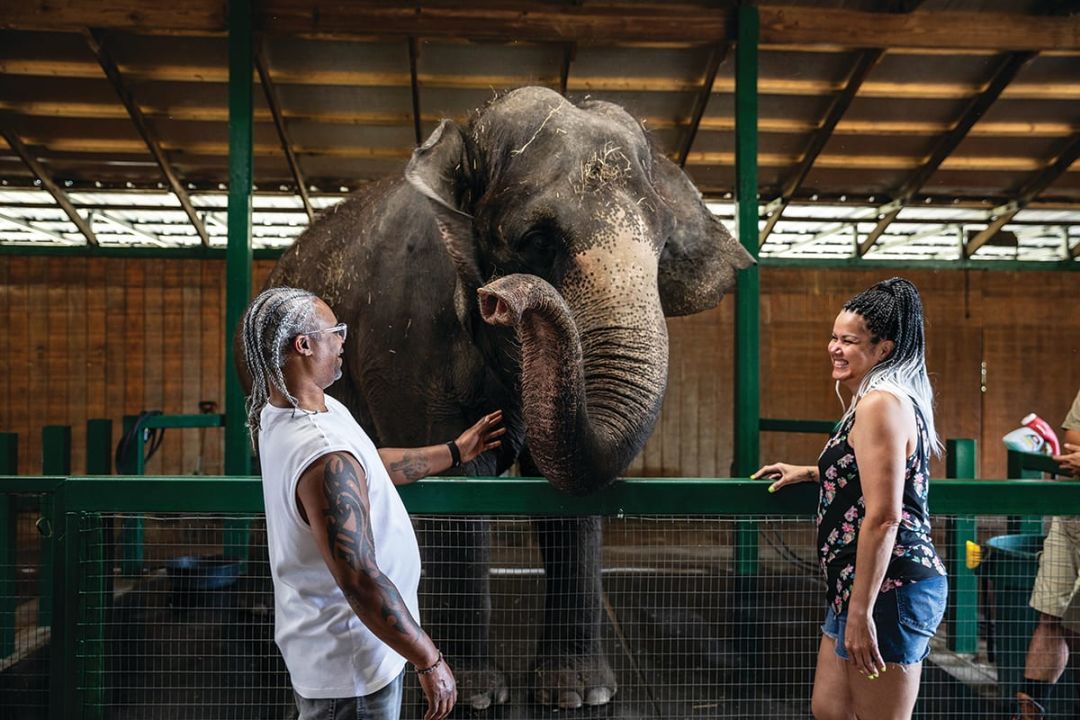
Image: Hannah Phillips
During a free, weekly community outreach program, the gentle behemoths hang out during yoga for veterans and offer therapy for groups with special needs and those with vision impairment, which Barreda says is particularly special. “You can’t understand what an elephant looks like without touching one and hearing about them,” he says.
Barreda, 31, comes from a long line of family members who worked in the exotic animal industry, starting with his grandfather and continuing through his parents, who retired 10 years ago. Attending the 16th International Elephant Conservation and Research Symposium in South Africa inspired him to start the nonprofit. In 1930, Africa’s elephant population was estimated at 10 million. Today, between 400,000 and 450,000 elephants remain; in Asia, no more than 50,000 are left. Habitat encroachment due to farming and palm oil production has led to fatal confrontations, and the ivory trade also persists, with premium prices placed on elephant tusks. An estimated 100 elephants are lost to poaching every day.
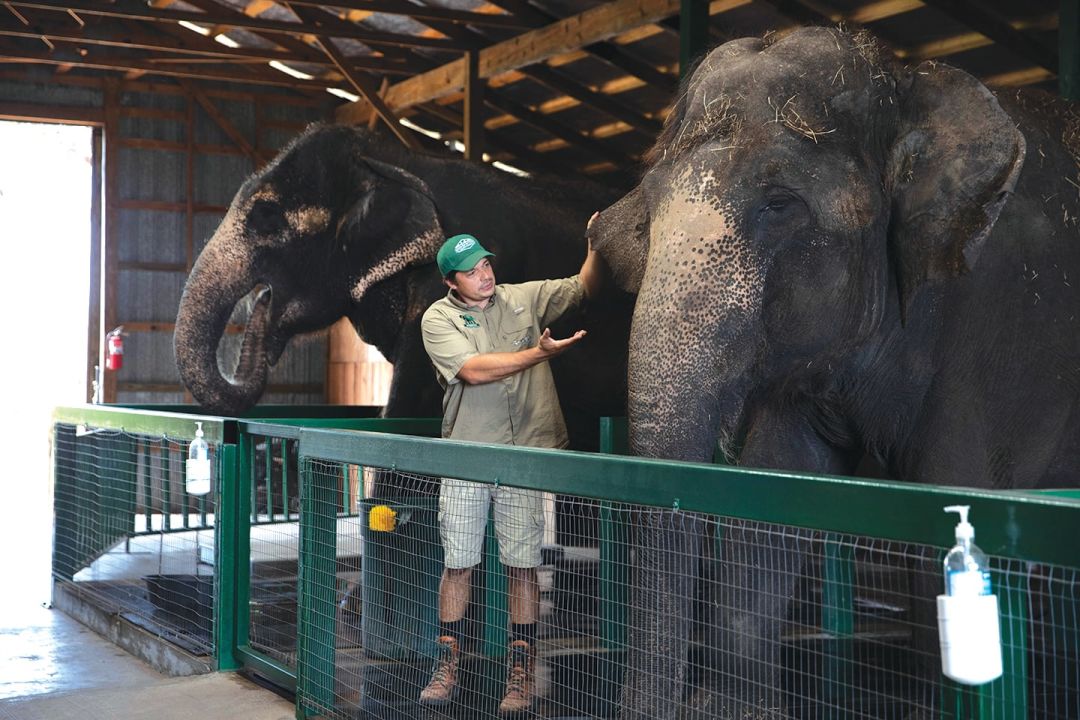
Image: Hannah Phillips
At the ranch, conservation work happens through education, exposing the public to these larger-than-life creatures and supporting the International Elephant Foundation with annual donations of $50,000. (Barreda serves on the organization’s board.)
Laws around the import of elephants have considerably tightened, and Barreda says the ranch is on the lookout for elephants that need a good home. For now, it’s just Carol and Patty. “They just need to be pampered every day,” Barreda says.
Myakka Elephant Ranch can be visited by reservation only. For more information, call (941) 702-0220 or visit myakkaelephantranch.org.
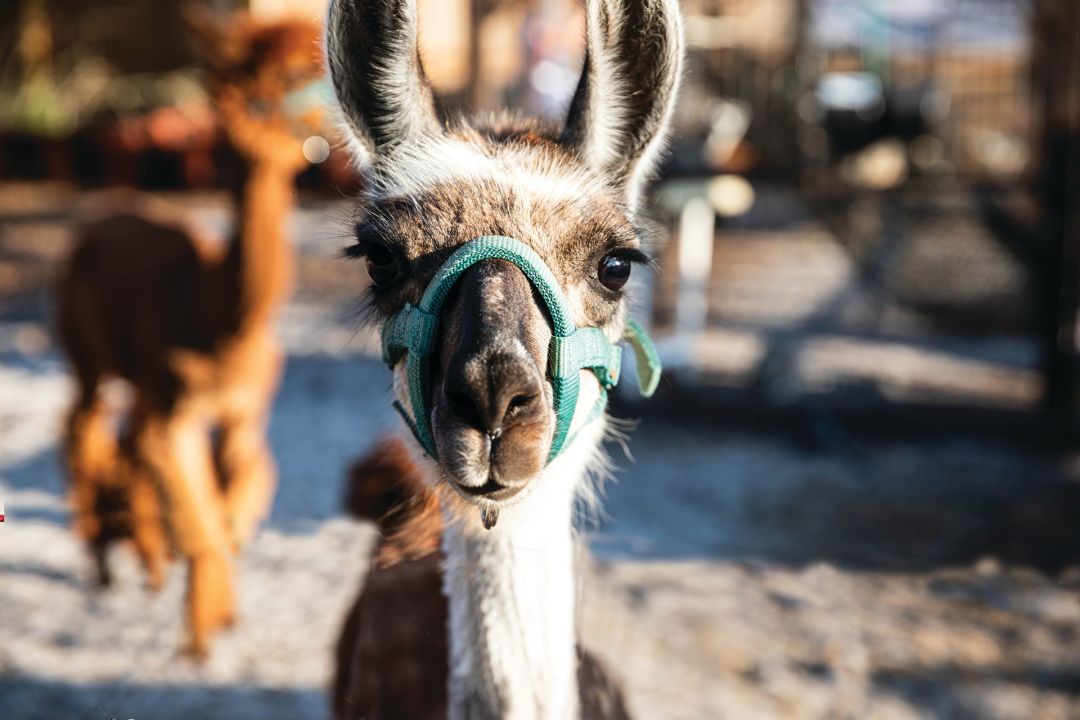
Image: Hannah Phillips
2nd Chance Ranch & Rescue
Signa Perry can rattle off dozens of exotic animal species and their pet names, plus factoids she knows from caring for them daily at her nonprofit, 2nd Chance Ranch & Rescue, in Duette, a small town in eastern Manatee County. At 2nd Chance, you’ll find a wallaby, a kangaroo, a hyrax, a coatimundi, macaws and parrots, not to mention llamas, a camel, sugar gliders, a Derby’s woolly opossum and ring-tailed lemurs. There are also Kunekune pigs, pythons and Floyd, a mischievous 5-month-old cotton-top tamarin who is often glued to Perry’s side.
Then there are the tamer creatures, like guinea pigs, goats, cats, tortoises and a fox, with a second one on the way because foxes “don’t do well if not in pairs,” says Perry. The ranch is also home to more than 40 roosters and six mini ponies she took in after a zoning change in Palmetto transformed their owner’s once-agricultural property into suburban land. The owner “fought and fought to keep them, but had to let them go,” Perry says.
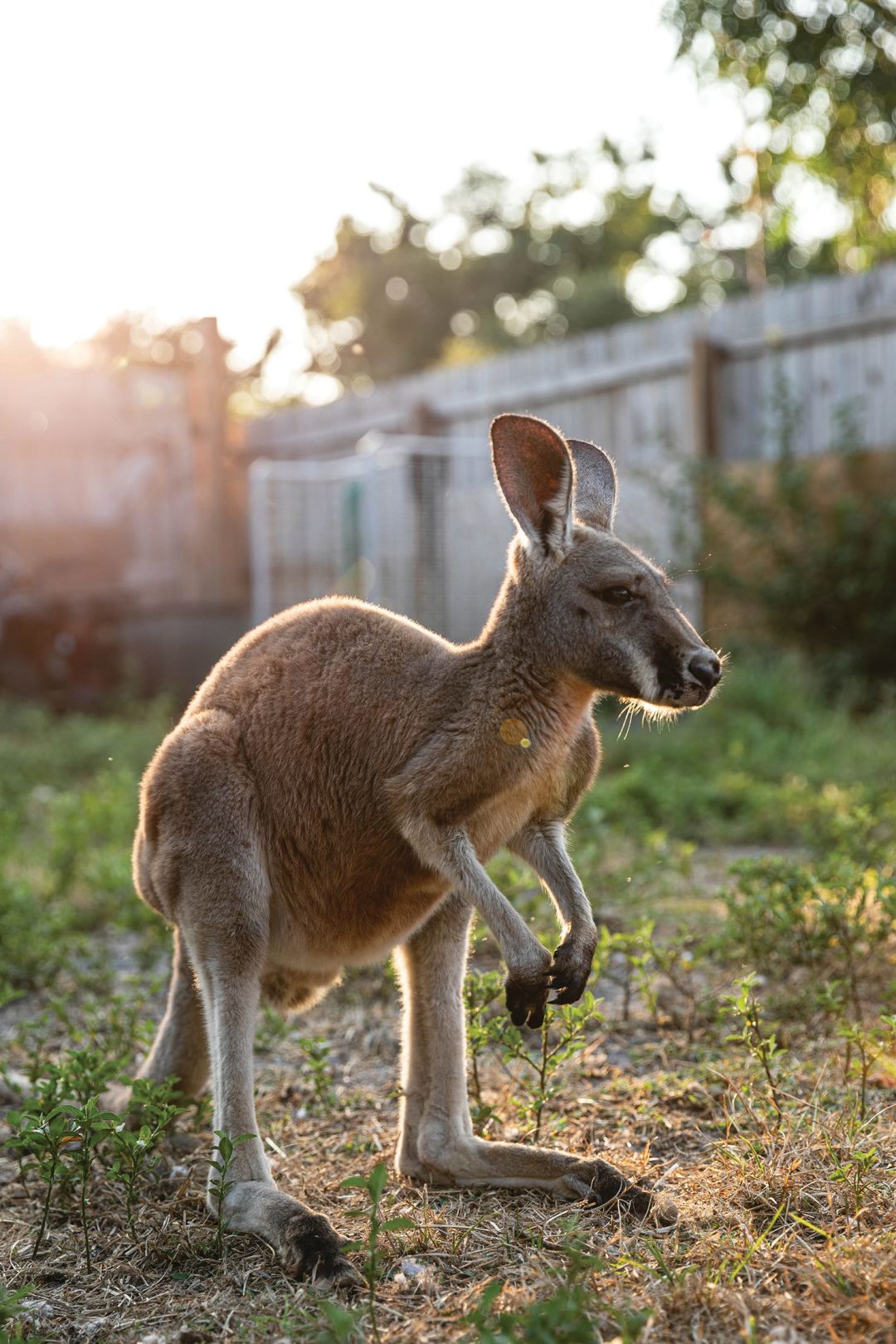
Image: Hannah Phillips
Altogether, roughly 230 animals live at the ranch, which Perry, 47, started in 2019. But her animal obsession began way before that. “Since I was probably 6, I drove my parents insane collecting animals like turtles, cats and ducklings,” she says. “I was always saving something.” As an adult, the Sarasota native earned an agriculture degree and worked at a veterinary clinic and as an animal control officer for Sarasota County.
Although the ranch isn’t open to the public, the farm animals can be transported to birthday parties, charity events and other gatherings. The proceeds help keep the nonprofit running. Some of the animals are up for adoption, like the Kunekune pigs, which are popular because of their diminutive size and big brains. “They’re inside pets people have and train like they would a dog,” Perry says. “They’re smarter, though, and are easily potty trained and super clean.”
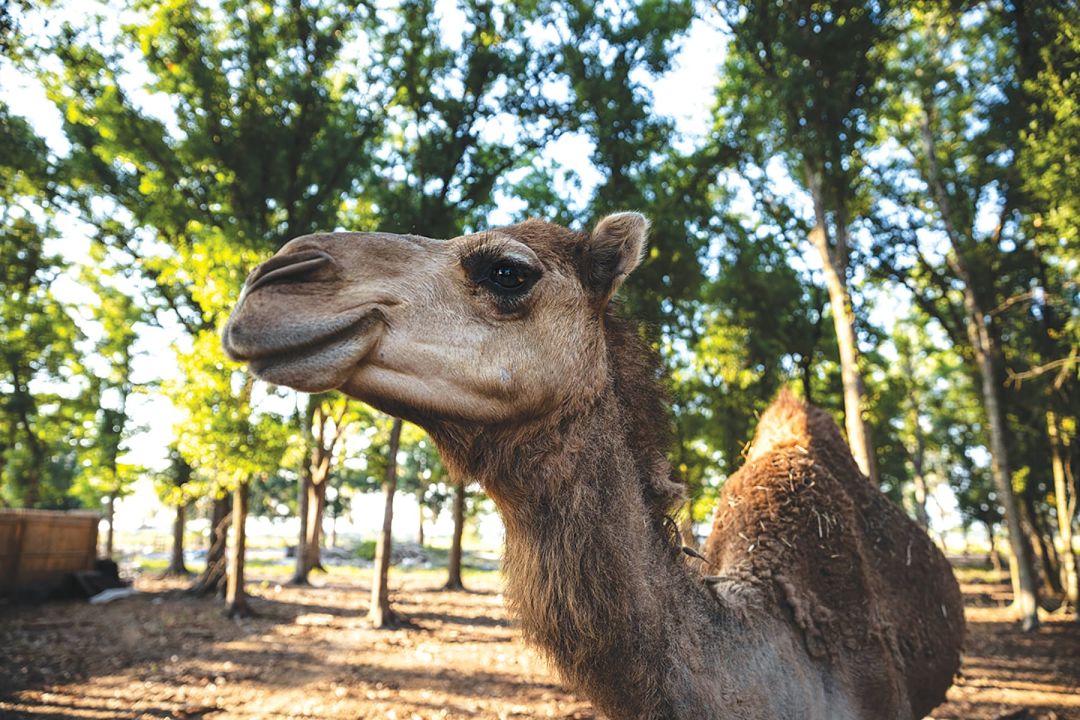
Image: Hannah Phillips
The paths the animals take to their home on the ranch vary. Many of the exotics came from a zoo in Lakeland that was shuttered. The tamer varieties often come from people who are moving or undergoing other household changes. “We have 21 guinea pigs and so many rabbits, ferrets, chinchillas and tons of snakes,” Perry says. Parrots are also common because they can live as long as 70 years, often outliving their owner. Tortoises are similar, and often outgrow their home and need more space.
Perry’s day begins at 5 a.m. and she spends two hours feeding all her animals. Then it’s off to her tile and carpet cleaning business until another round of feeding in the evening. The weekends are booked with mobile parties and other events.
“It’s not all fun all the time, and it’s hard work, but I’ll never quit,” she says. “Those 230 animals are my life.”
2nd Chance Ranch & Rescue is not open to the public. For more information, call (941) 737-9126 or visit 2ndchanceranchfl.com.
Other Homes for Exotic and Not-So-Exotic Animals

Save Our Seabirds
Every year, this Sarasota nonprofit receives more than 5,000 calls reporting birds in distress and cares for more than 1,000 birds before releasing them back into the wild, or in some cases, finding permanent homes for them. Around 100 of the birds have been deemed non-releasable and live at the organization’s facility, where the public can see them. Located right next door to Mote Marine Laboratory & Aquarium, Save Our Seabirds makes for a nice complement to a day at the aquarium. 1708 Ken Thompson Parkway, Sarasota, (941) 388-3010, saveourseabirds.org

Image: Shutterstock
Sarasota Jungle Gardens
Just north of downtown Sarasota, this slice of vintage Florida is known best for its free-roaming flamingos that the public is invited to feed by hand. Amid gardens that span more than 10 acres, animal and bird shows bring visitors up close and personal with parrots, alligators, crocodiles, snakes, lemurs, tortoises and coatimundis. There’s also an African porcupine, muntjac deer and a petting zoo for a full roster of wild encounters. 3701 Bay Shore Road, Sarasota, (941) 355-5305, sarasotajunglegardens.com
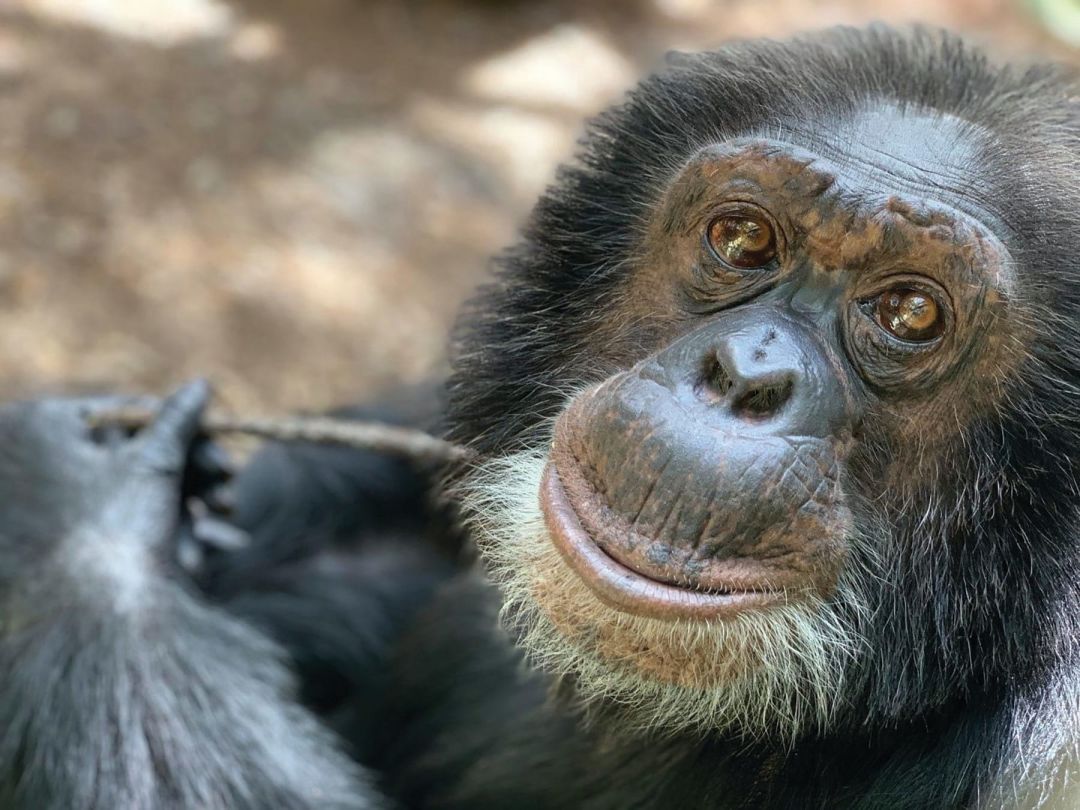
Image: Courtesy Photo
Center for Great Apes
(Not Open to the Public)
Located roughly an hour’s drive from Sarasota, the 150-acre Center for Great Apes was founded in 1993 and is accredited by the Global Federation of Animal Sanctuaries, which involves inspections and a promise of no breeding or public viewings. The center’s aim is to rescue chimps and orangutans from captivity while working to end the practice of keeping apes as exotic pets. The center is home to more than 60 animals, but the hope is that the need for the center will peter out over time. Many of the apes come from the entertainment industry, including Bubbles, Michael Jackson’s former chimp. Wauchula, (863) 767-8903, centerforgreatapes.org
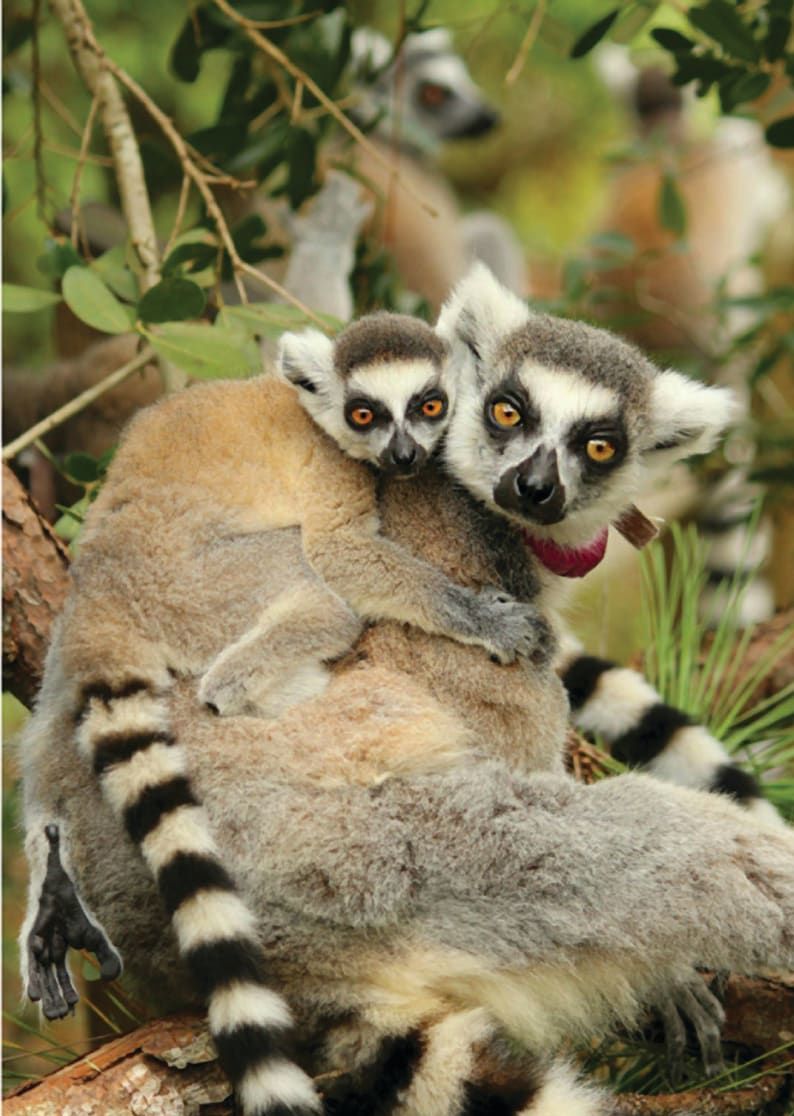
Image: Courtesy Photo
Lemur Conservation Foundation
(Not Open to the Public)
Founded in 1996, the nonprofit Lemur Conservation Foundation occupies 130 acres that are dedicated to preservation and conservation through breeding, research and education. Lemurs are native only to Madagascar, where they are endangered. The foundation's lemur colony is more than 50 strong, with five different species represented, and it welcomed four newborns last year.
The property is not open to the public but welcomes scientists and students studying lemur behavior. It also has a field office in Madagascar, where staff protect lemur habitat through reforestation, community development, eco-tourism and education. Myakka City, (941) 322-8494, lemurreserve.org
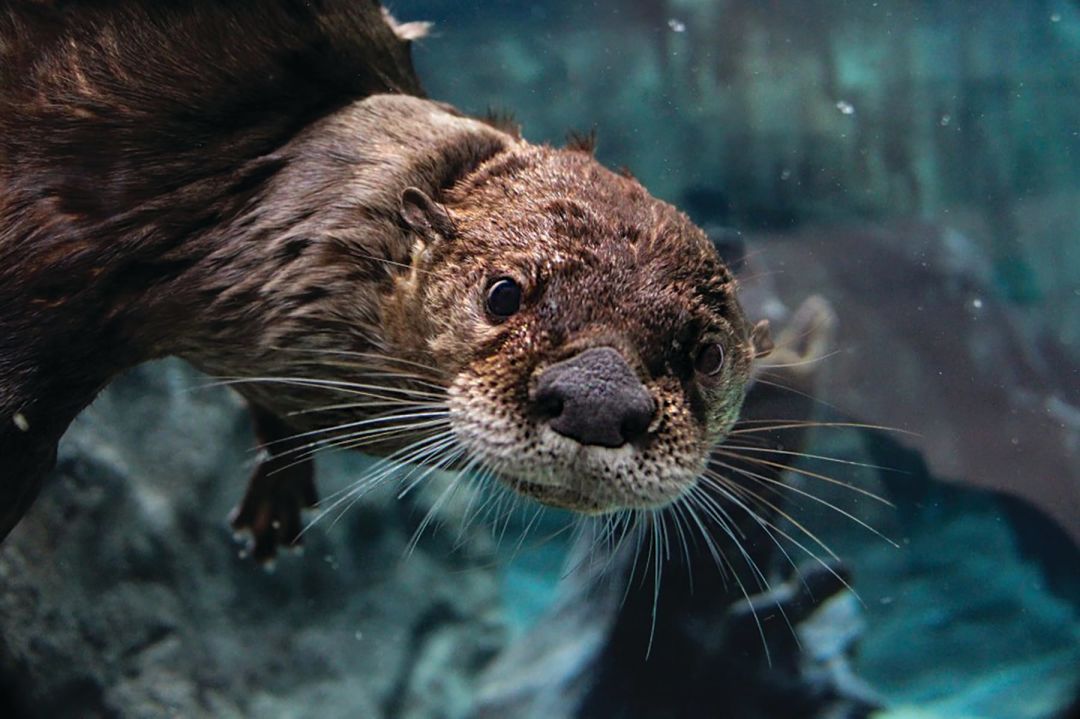
Image: Courtesy Photo
Mote Marine Laboratory & Aquarium
This nonprofit marine research institution is home to all types of wildlife, from teeny-tiny seahorses to massive ancient tortoises and sea turtles. Check out captivating sharks, graceful sea jellies and funny North American otters. Pet stingrays and check out sea urchins, crabs, tulip snails, sea cucumbers and manatees. A new location is in the works out near the University Town Center mall, but Mote’s original headquarters will remain open to the public until the new facility opens next year. 1600 Ken Thompson Parkway, Sarasota, (941) 388-4441, mote.org